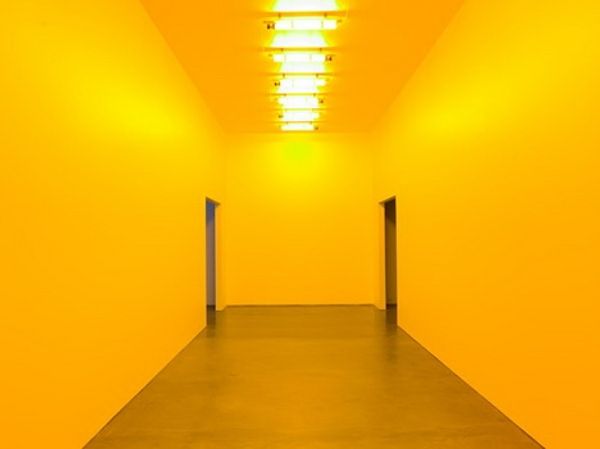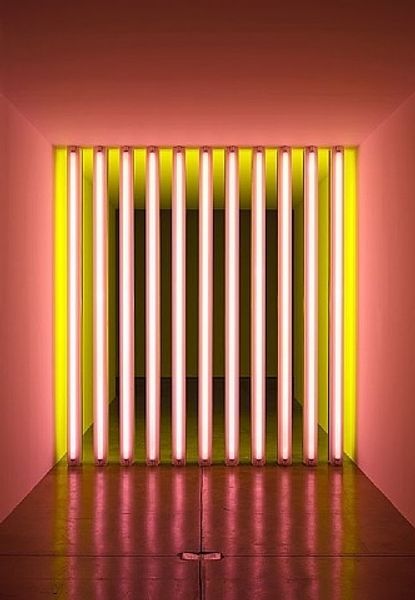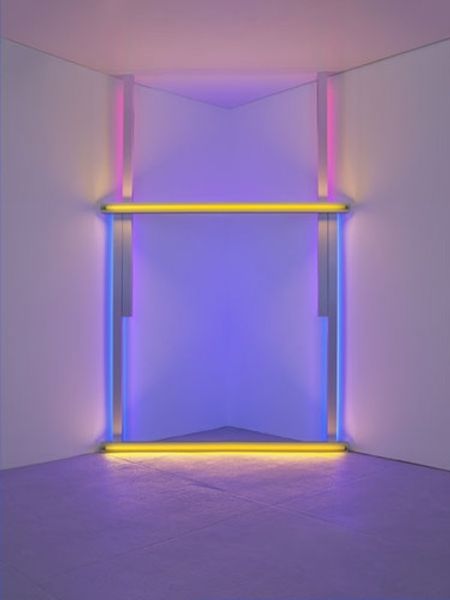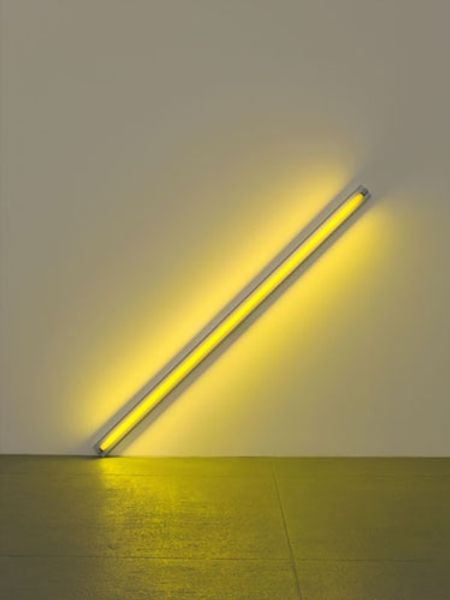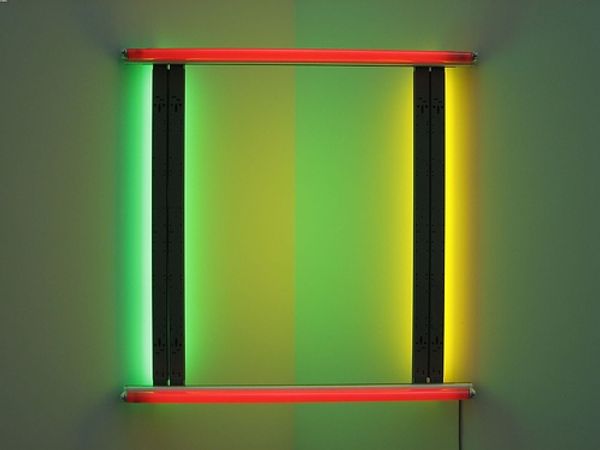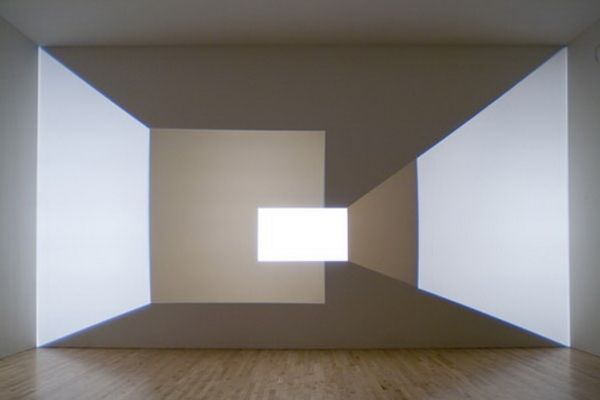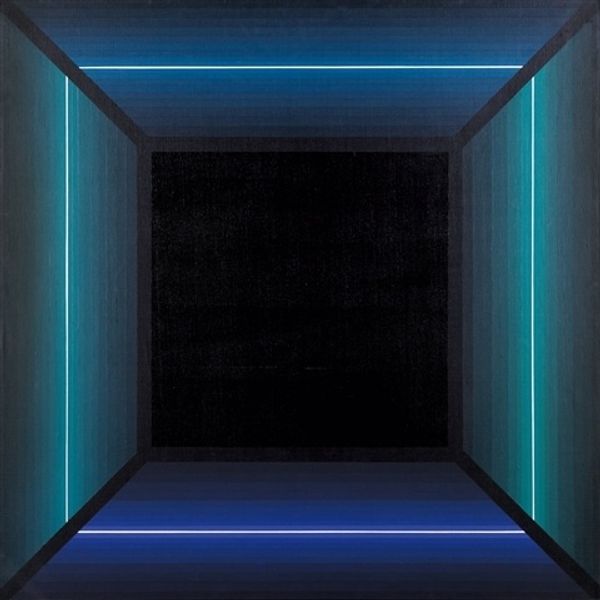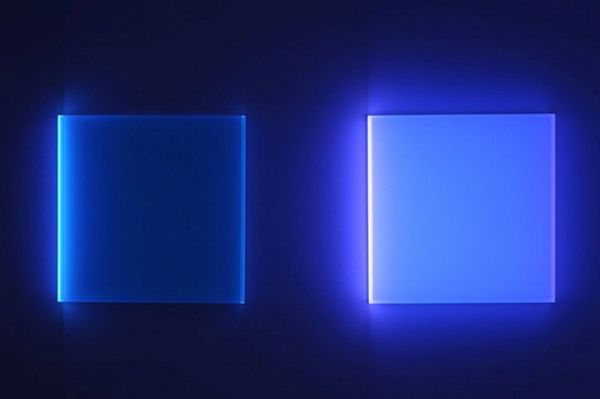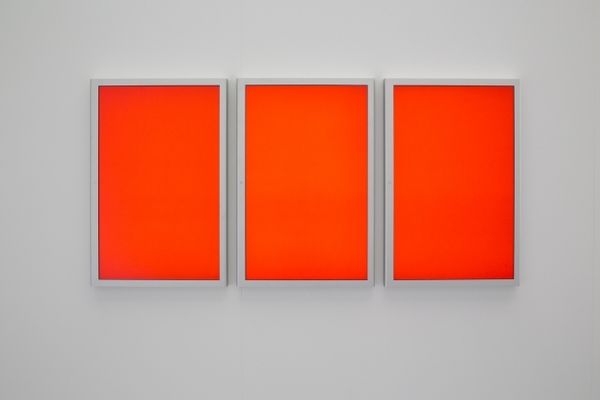
site-specific, installation-art
#
light-and-space
#
geometric grid
#
abstract shape
#
minimalism
#
light trace
#
minimal geometric
#
simple geometric shape
#
abstract pattern
#
minimal pattern
#
geometric
#
site-specific
#
installation-art
#
line
#
geometric form
#
geometric shape
#
orange
#
geometric figure
Copyright: Dan Flavin,Fair Use
Curator: At first glance, this is intensely immersive! A seemingly endless room, washed in this vivid yellow, or is it orange? The walls, the floor… it feels almost hallucinatory. Editor: We are observing “Untitled (to Jan and Ron Greenberg),” an installation created by Dan Flavin in 1973. It epitomizes his use of commercially available fluorescent light tubes to redefine and activate architectural spaces. Site-specificity was important to him. Curator: So, the space itself is part of the artwork, not just the placement of the tubes. Makes the work feel much less like an object. I am drawn to the singular green light that cuts vertically on the far right; the artist is being very intentional. Flavin is manipulating how we experience color in a shared place. Is he interested in industrial spaces, given his reliance on readymade fixtures? Editor: Flavin's background certainly informs his artistic choices. Think about how electric light, since its broad availability, shifted symbolic association away from the spiritual light toward utilitarian spaces—the factory, the office, etc. And then, consider that fluorescent lighting and the minimalist art movement developed nearly in tandem, both deeply entwined with American industry and cultural shifts towards simplicity and mass production. It's more complicated than industrial fascination; there are layers of social and aesthetic implications to explore. Curator: Do you think that naming the artwork for Jan and Ron Greenberg influenced its intent? Was he trying to transform how a space felt, not for industry, but for his patrons, maybe a feeling more specific to domestic life, given the almost domestic colors? Editor: The dedication offers an interesting point of departure! Given that the Greenbergs were gallerists, representing influential figures of that era, I wonder if this work represents an illuminating moment in the art world, a creative genesis. What's striking to me is how Flavin, using common materials, completely alters perception, prompting a kind of phenomenological awareness. Curator: Ultimately, though, even if unintentional, there's still something universally optimistic and energetic that one derives from such simple forms rendered in strong colors. I see its popularity over time now; and also it challenges museum collecting. Editor: Indeed, it forces the institution to think of art as fundamentally mutable—the work transforms in its context, offering an ongoing commentary on our spaces, public or private.
Comments
No comments
Be the first to comment and join the conversation on the ultimate creative platform.
